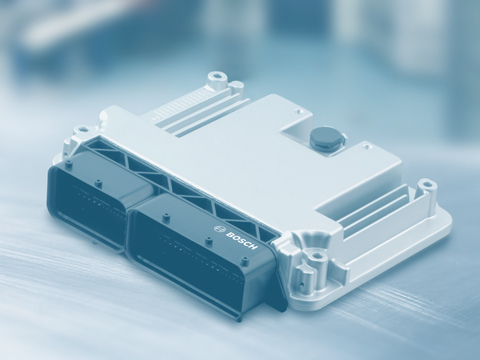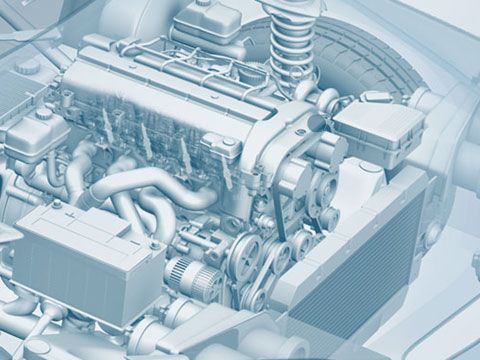Diesel Engine
The diesel engine remains one of the most widely used engines today, as it is used in passenger cars, commercial vehicles, agricultural machinery, ships, and industrial applications. Like the petrol engine, the diesel engine converts chemical energy into thermal energy, which is then transformed into mechanical energy via pistons to drive the vehicle.
Function
Named after its inventor, Rudolf Diesel, the diesel engine is a combustion engine that achieves high efficiency and performance through the high compression of the air/fuel mixture. Compared to petrol engines, diesel engines consume significantly less fuel.
Operating Principle
The diesel engine relies on the self ignition of diesel fuel mixed with compressed air to generate energy. This process consists of four strokes:
1. Intake Stroke
The intake valves open, and the piston moves downward, creating a vacuum inside the cylinder. This allows air to enter the cylinder.
2. Compression Stroke
The piston moves upward, compressing the air in the cylinder. Due to compression, the air temperature rises significantly, and the pressure increases. Both the intake and exhaust valves remain closed during this stroke.
3. Power Stroke
Diesel fuel is injected directly into the combustion chamber under high pressure, mixing with the hot, compressed air. The fuel ignites spontaneously due to the high temperature and pressure, generating a powerful expansion force. This force pushes the piston downward, converting thermal energy into mechanical work. The piston movement drives the crankshaft via the connecting rod.
4. Exhaust Stroke
The exhaust valves open, and the piston moves upward again. This expels the burned gases from the cylinder into the exhaust system, where they are released into the environment. The cycle then starts again with the next intake stroke.
Construction
The diesel engine is a complex mechanical system composed of several key components:
Engine Block & Crankcase
The engine block houses the cylinders in which the pistons move up and down. Typically made of cast iron or aluminium, it forms the engine’s foundation.
Cylinders & Pistons
Each cylinder contains a piston that moves up and down. The pistons are connected to connecting rods, which transfer movement to the crankshaft.
Crankshaft
Converts the linear movement of the pistons into rotational movement. The energy generated by combustion is transferred via the connecting rods to the crankshaft, which then drives the vehicle’s transmission.
Valve System
Includes intake and exhaust valves, regulating airflow and exhaust gases in and out of the cylinders. These valves open and close in sync with the engine cycle to ensure proper combustion and emissions control.
Fuel Injection System
The fuel injection system delivers diesel fuel into the cylinder, where it mixes with the compressed air and ignites through self combustion. Modern diesel engines use electronically controlled injection systems to precisely regulate injection timing and fuel quantity for optimal efficiency.
Exhaust System
Directs combustion gases out of the cylinders. Modern diesel engines include exhaust aftertreatment systems such as Exhaust Gas Recirculation (EGR), catalytic converters, and particulate filters to reduce emissions.
Cooling & Lubrication System
The cooling system circulates coolant to maintain an optimal engine temperature. The lubrication system reduces friction between moving parts, minimising wear and ensuring smooth operation.
Turbocharging
Many modern diesel engines use turbochargers to improve efficiency and performance. The turbocharger consists of a turbine and a compressor: The turbine is driven by exhaust gases. The compressor draws in and compresses fresh air before sending it to the cylinders. This increases air intake, leading to better combustion efficiency and higher power output.
Safety
As a core vehicle component, ensuring safe engine operation is crucial. Advanced designs, materials, and control systems in modern diesel engines provide enhanced safety standards and efficient emission control.
Environmental Considerations
Modern diesel engines in passenger vehicles meet strict emission regulations and have become significantly cleaner. In recent years, significant advances in emission reduction technology, such as AdBlue injection and diesel particulate filters, have helped reduce environmental impact.
Value Retention
Diesel engines are known for their durability and efficiency. However, regular maintenance and servicing are essential to ensure longevity. Regular oil changes and replacement of wear parts (e.g., glow plugs, air filters) can extend engine life. Proper driving habits also help reduce engine wear and maintain performance over the long term.








